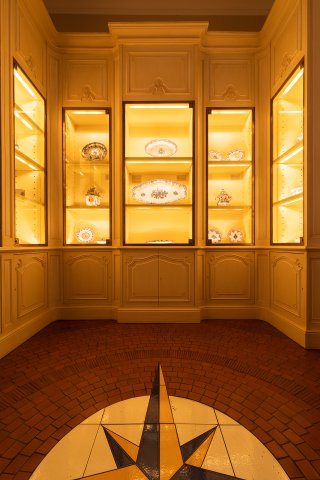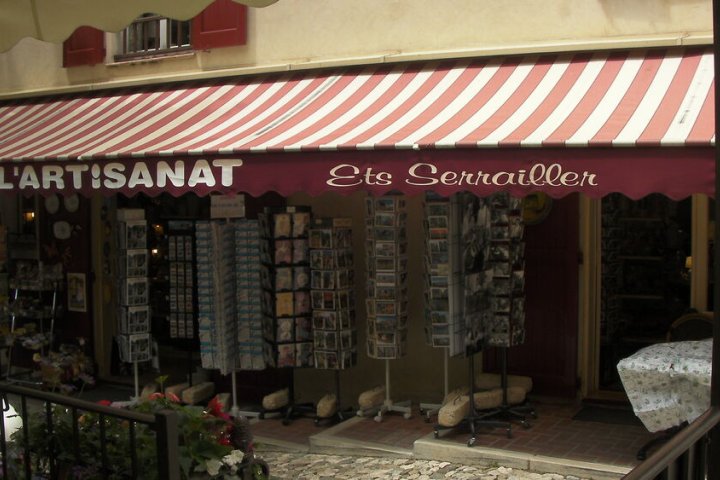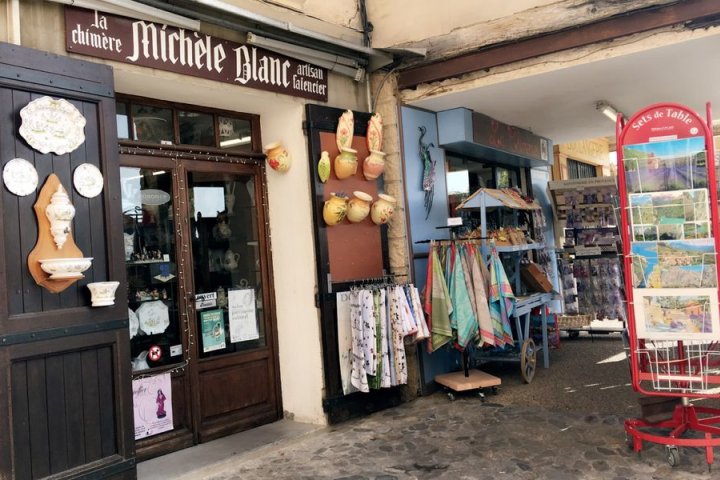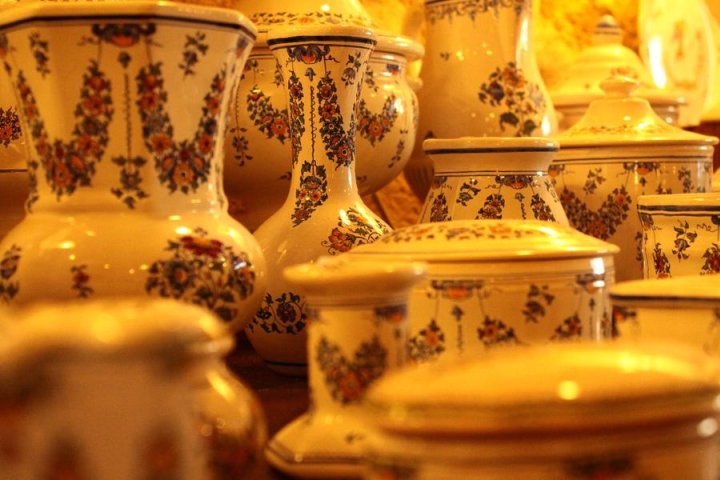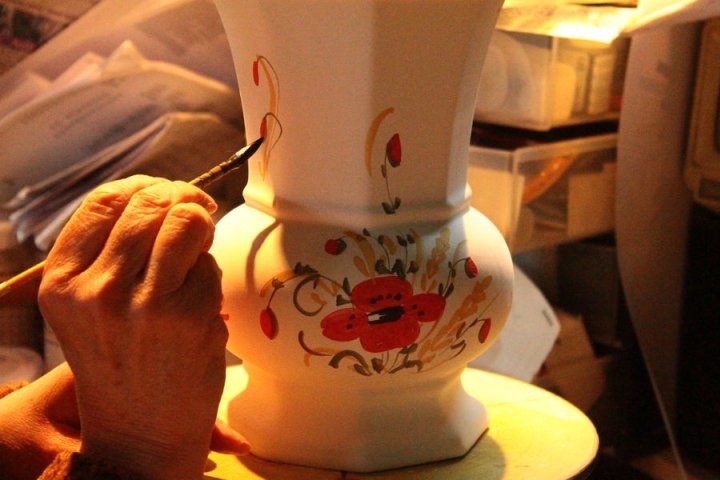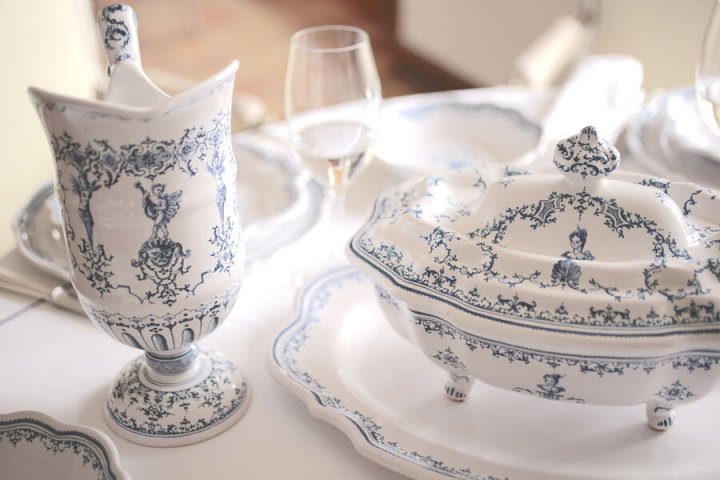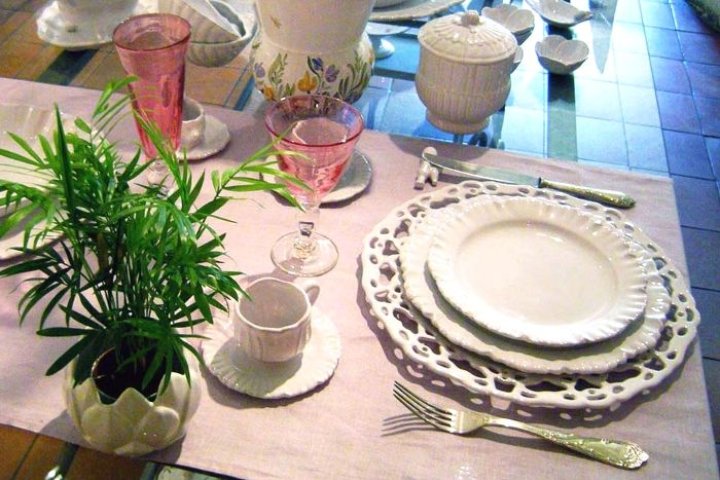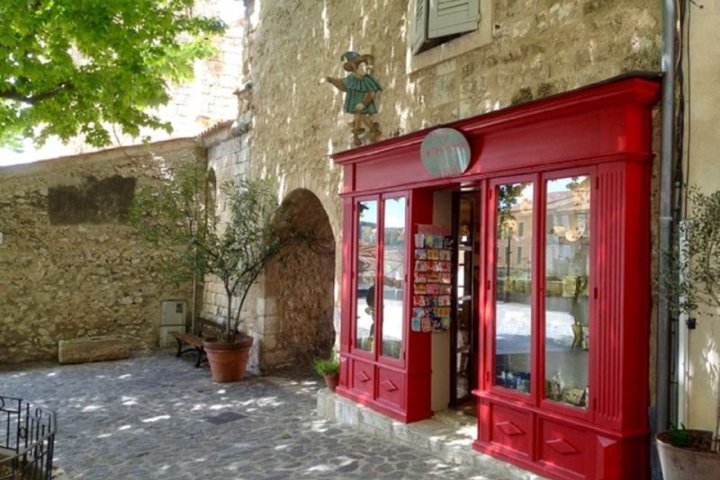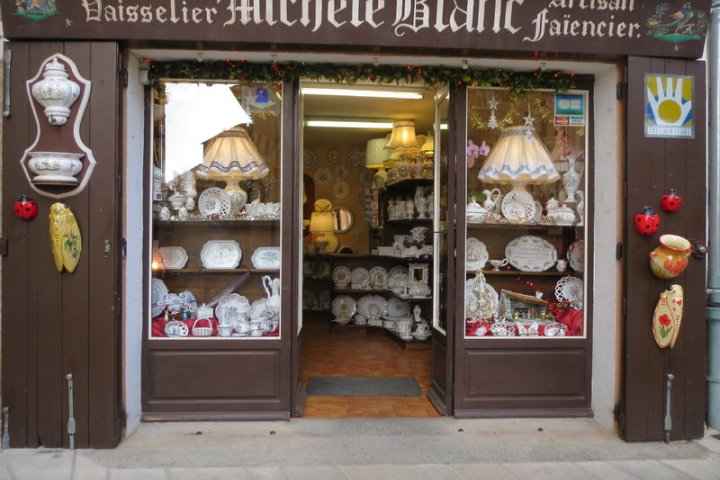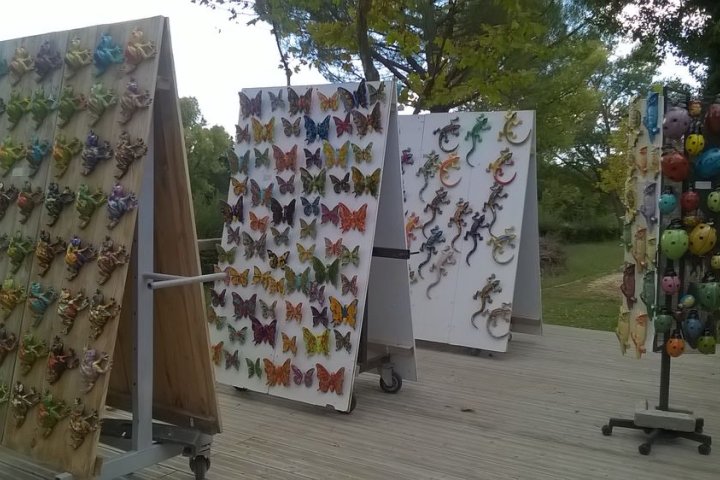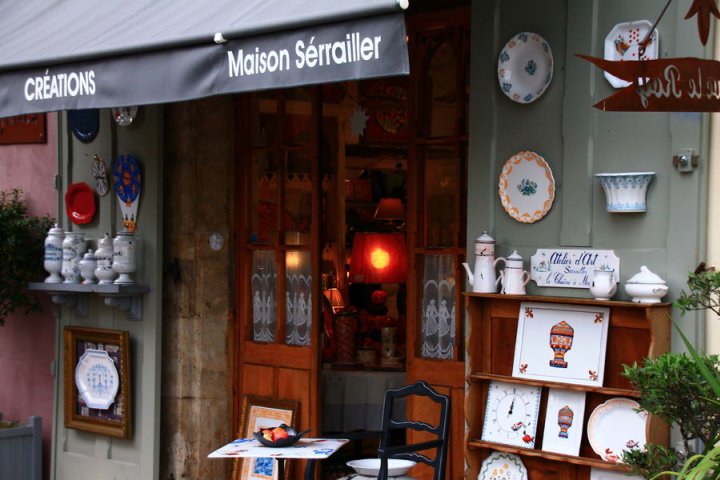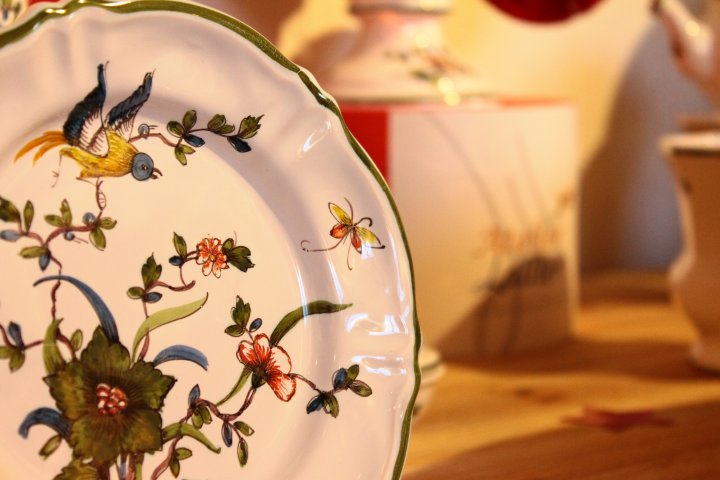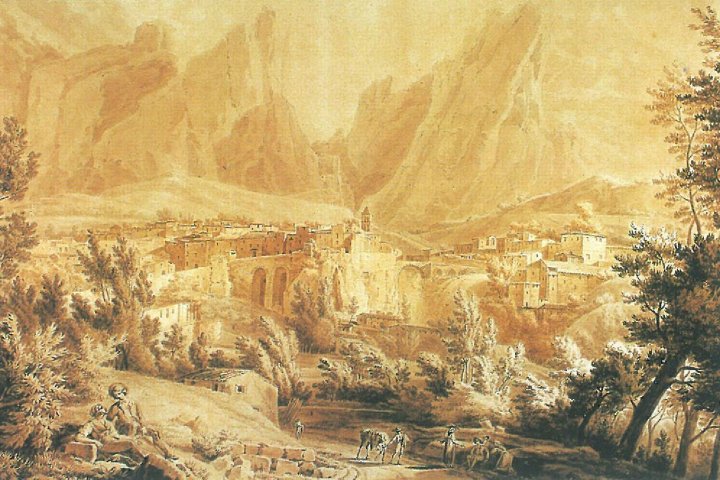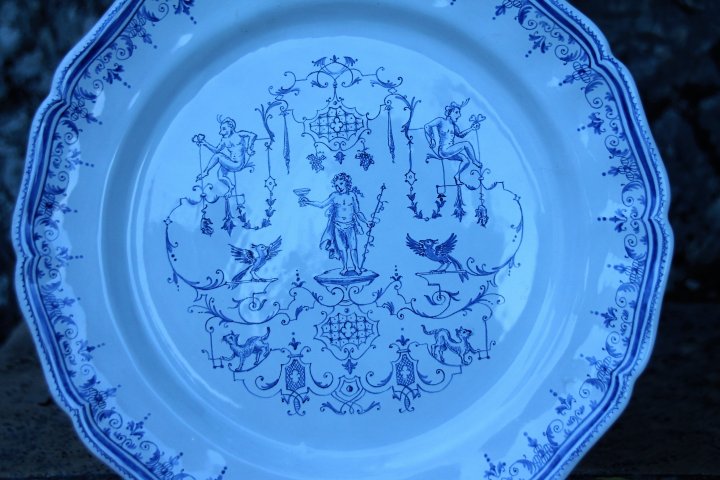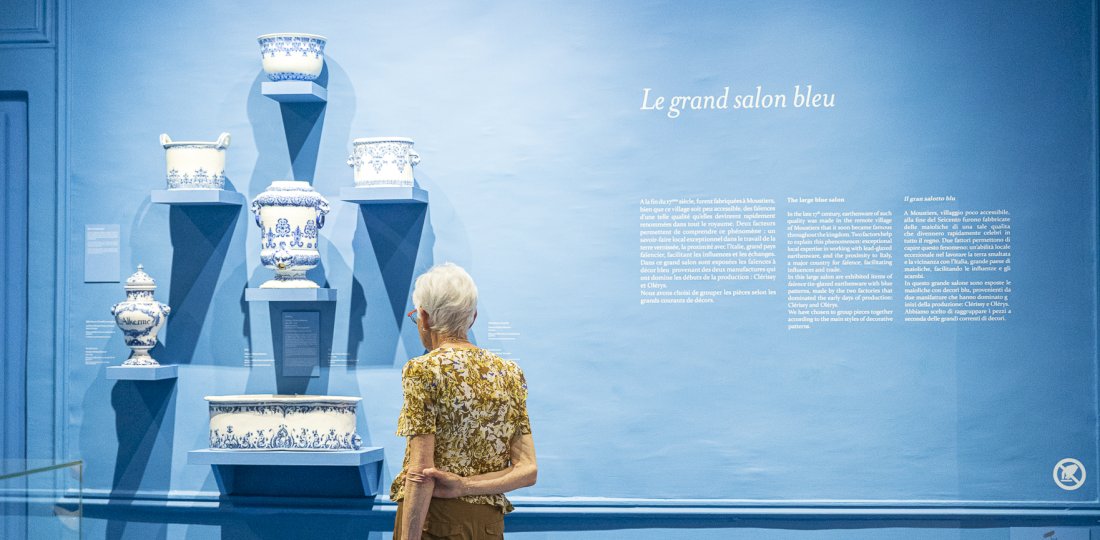
Crédit photo: Julien Grondin
Moustiers-Sainte-Marie's Faïence Museum
The Museum of Faïence was inaugurated in 1929, September 15, by Marcel Provence and the Academy of Moustiers. In 1927, there were no more faïence workshop in activity. The 1870 war aswell as the industrial competition slowly destroyed this traditional craft. Marcel Provence with several artists and ceramists renewed this art by giving back an oven to Moustiers. Thanks to him, faïence was born again.
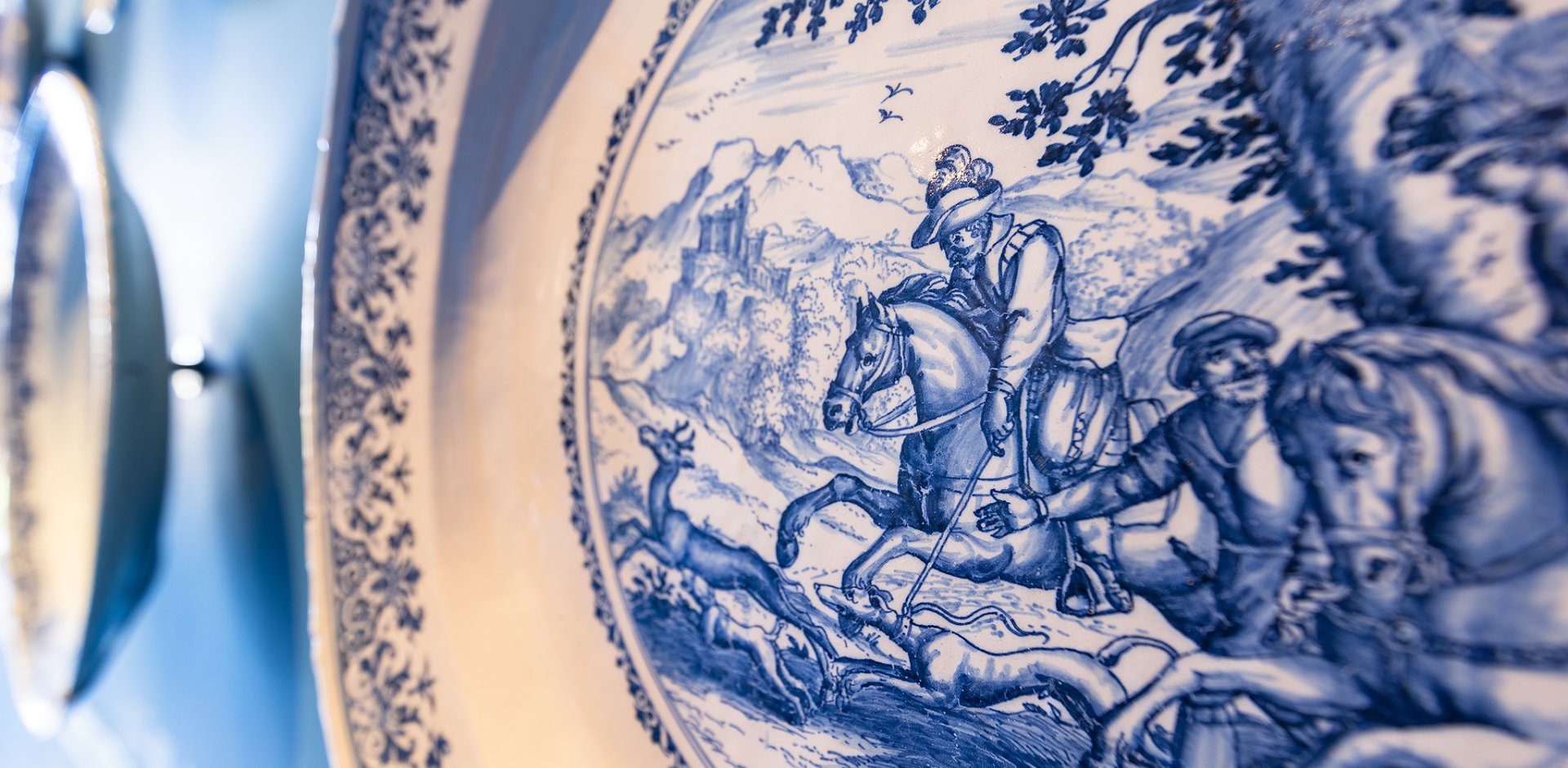 Crédit photo: Julien Grondin
Crédit photo: Julien Grondin
Some history...
Why was Moustiers's faïence so well known? It was because of its great enamel quality. Before it was used, clay was chopped, cleaned and soaked. It was let to be rotten in caves for months. This made the quality of Moustiers's clay. It was good enough to hold during the firing and enamel could stick perfectly.
« Moustiers's faïence has the village' accent. Touch it with your nail and you will hear a crystalline sound, deep and young, like the Easter's bell echoing in the mountains. »
Marcel Provence.
Crédit photo : Julien Grondin
An evolution of colors and decorations through the centuries.
Pierre Clérrissy was the first to obtain the title of "Master Faïencier" in 1679. All the pieces of its workshop were luxurious with a cobalt blue. His work brought happiness to every illustrious of France and its industry didn't have any competition for 50 years. Two of Clérissy's workers got there own workshop: Olérys and Laugier. They brought a new dynamic into traditional decorations. You can enjoy there pieces in the Bleu Salon of the Faïence Museum.
Later on, garlands decorations appeared with more colors. The center of the piece becomes window opened on a fantasy world ; frivolous and even more colored decorations make an appearance (also visible at the Faïence Museum). At the begining of the 17th century, all the necessary elements are there (the economic and commercial expansion, the peace in the Realm).
During your visit, don't miss the "grotesque" decorations. It was used to mok man's pride and other subjects.
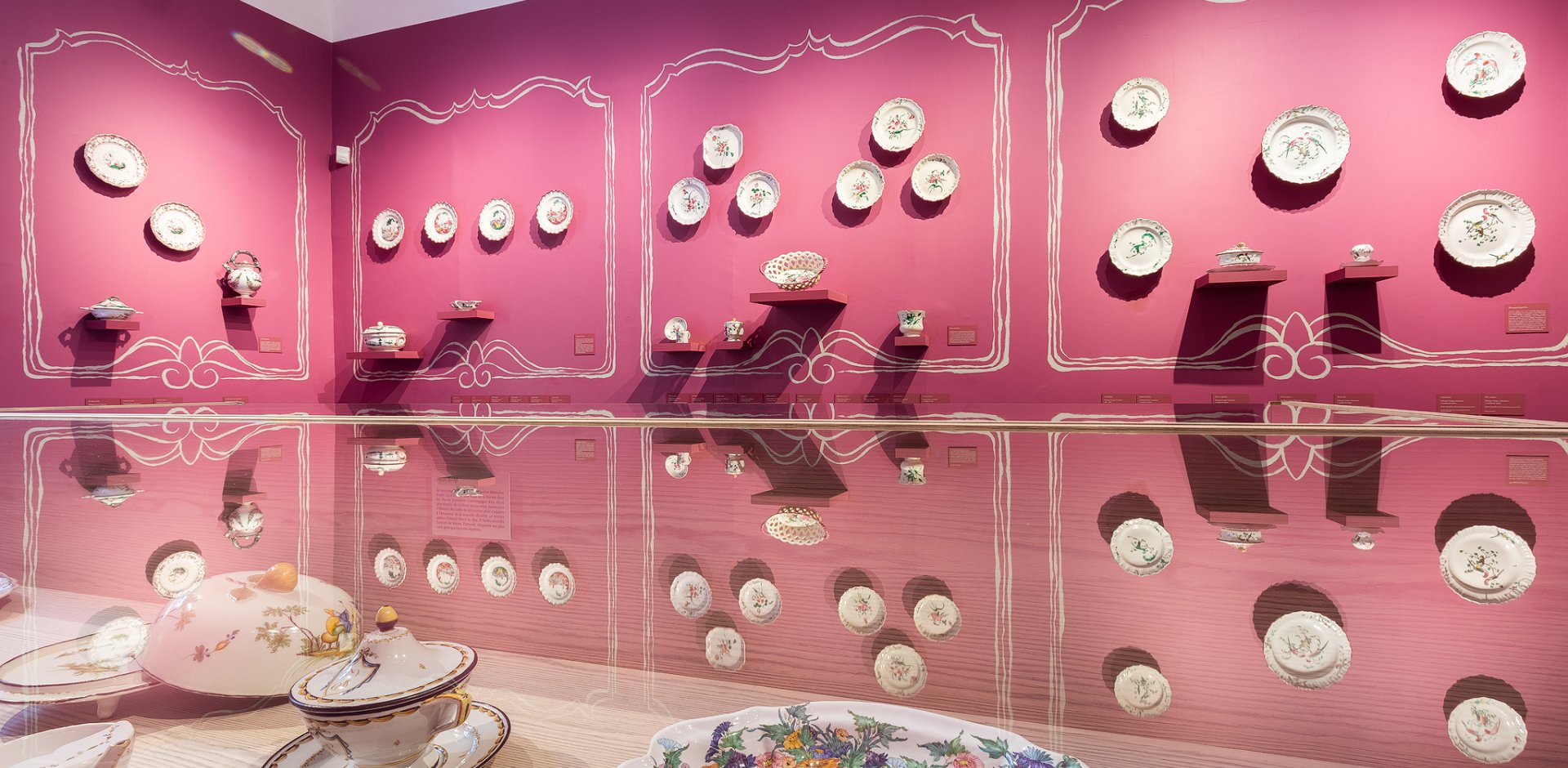 Créditi photo: Julien Grondin
Créditi photo: Julien Grondin
We won't reveal everything in this article. Know that other pieces and decorations are to be seen at the Museum. You just have to push the door open...
On the same subject of Faïence, shops are opened to welcome you all around the village. This way, you will discover the work of 11 workshops still in activity in Moustiers-Sainte-Marie, with their own decoration from the 17th to the 20th century.






